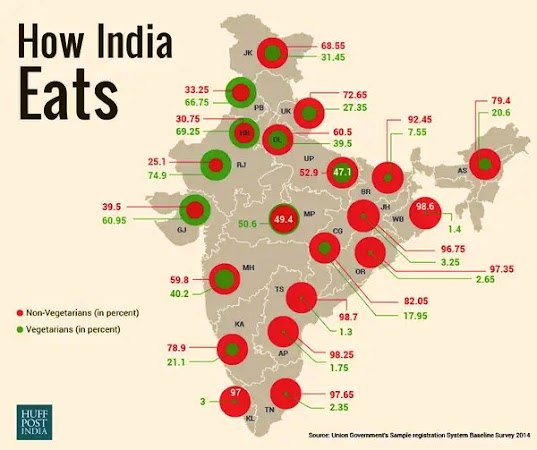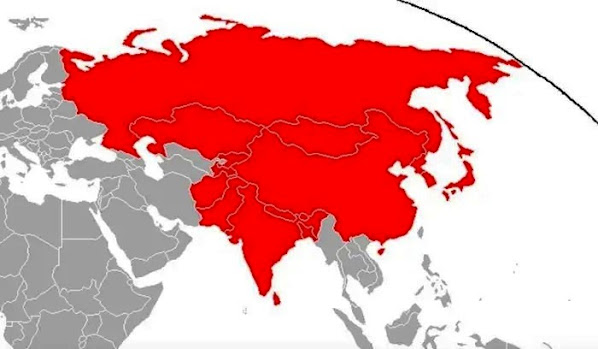The biggest myth, of
course, is that India is a largely vegetarian country. For a long time, India
has been “assumed”as primarily vegetarian, and
particularly beef-disdaining, society. Such a representation has had obvious
consequences over the last century or so, and much more recently in the openly
toxic mixture of communalism and casteism. The extent of overall vegetarianism is much
less than common claims and stereotypes suggest; survey estimates show that
between 23% and 37% of the population of India is vegetarian. It means that
more than two thirds of India in non vegetarian in is food habits.
Thus, far from being a vegetarian nation, India is a meat-eating majority nation. The notion of ‘non-vegetarian’ and the discourse around vegetarianism, then, reflect the hegemony enjoyed (thus far) by the ‘minority’ vegetarian population. Apart from Jains (nearly all vegetarian) and Sikhs (majority vegetarian), no other religious category is majority vegetarian. Hindus – by far the largest group in the population – are majority meat-eaters. This is a myth buster and moment of truth for vigilantes and meat hating minority population and being in power, it is hegemonic.
Hindus, who make up 80% of
the Indian population, are major meat-eaters. Even only a quarter of the
privileged, upper-caste Indians are vegetarian. At least 7% of Indians eat
beef, according to government surveys. But there is evidence to show that some
of the official data is considerably under-reported because beef is caught in
cultural political and group identity struggles in India. Beef is not a taboo
in Kerala, North East, and Tribal Population.
Muslim & Christian groups that are more than 20% of population are
majorly beef eater. So the 7% beef eating population is seriously questionable.
Meat eating in India is a
complex issue, with many facets. However, recent trends and figures certainly
seem to indicate one thing: it is a mistake to label India as a vegetarian
nation.
There’s no meat to the
argument that India is a vegetarian nation.



